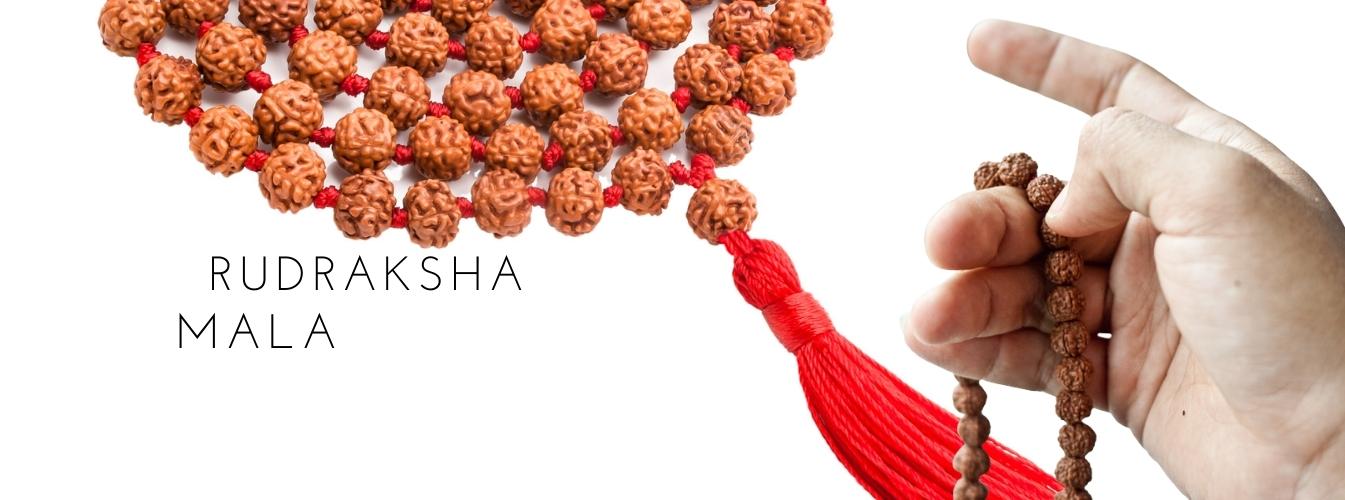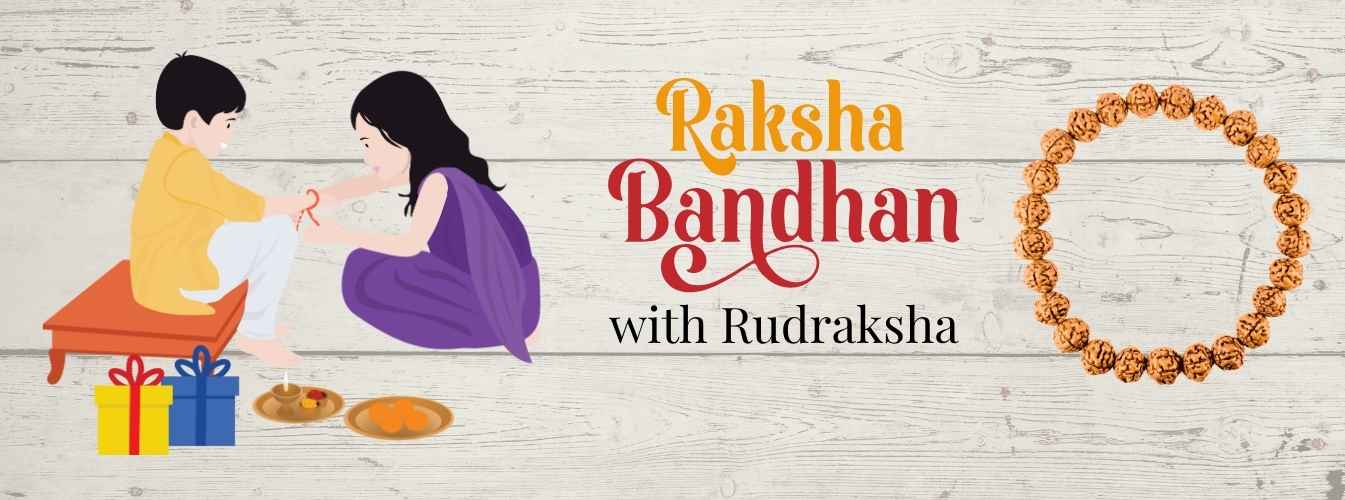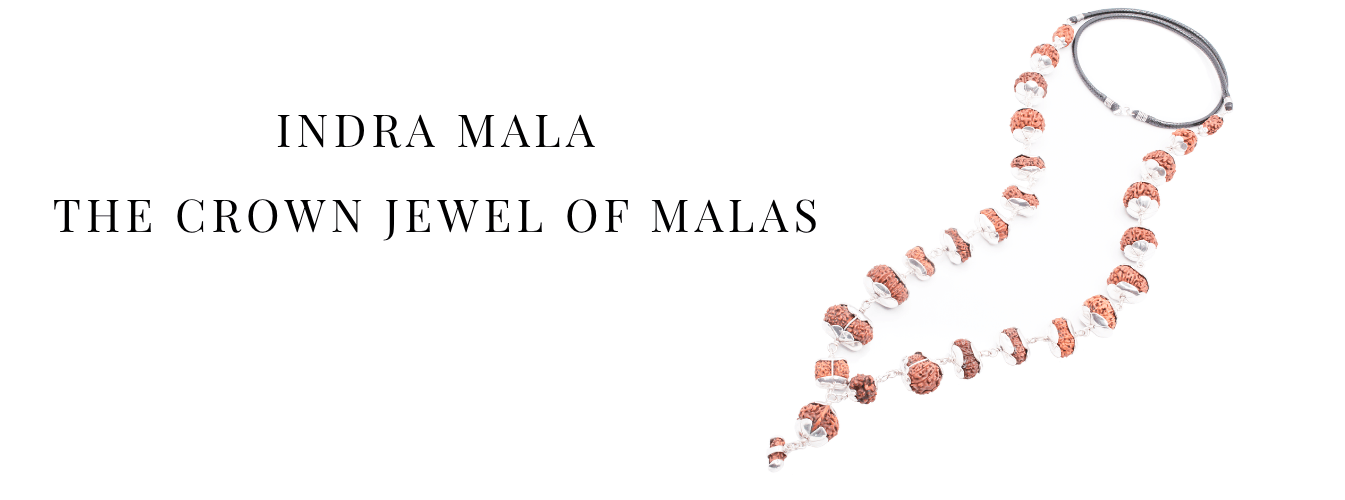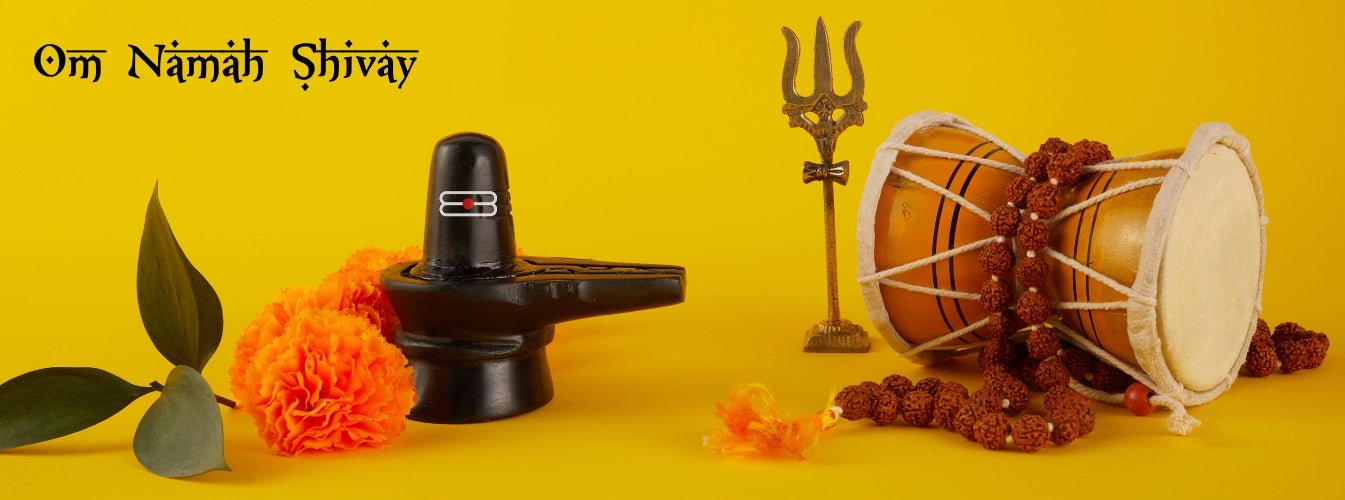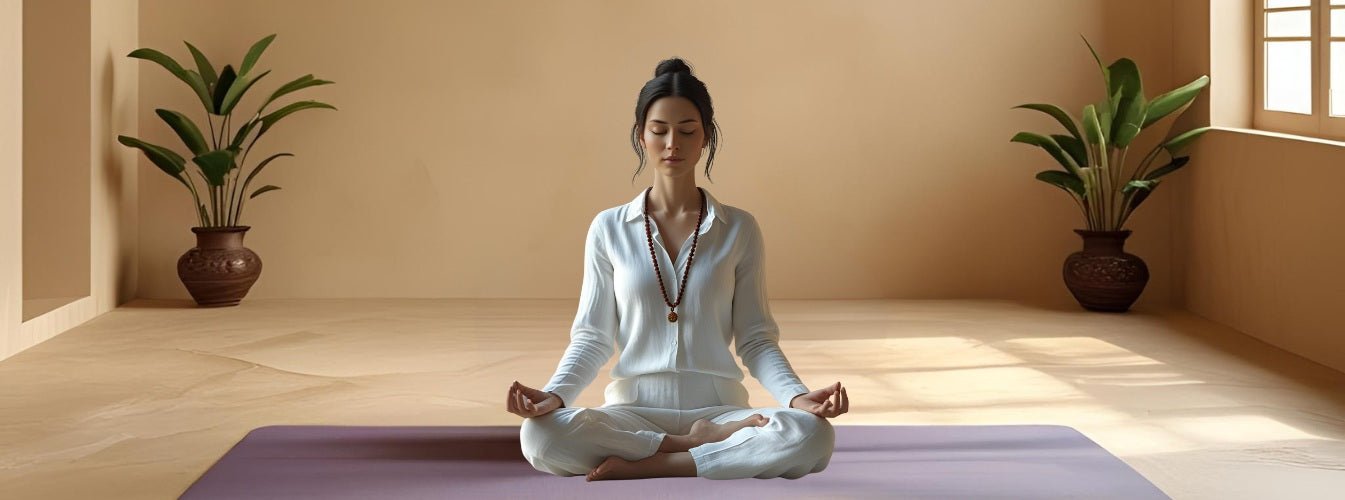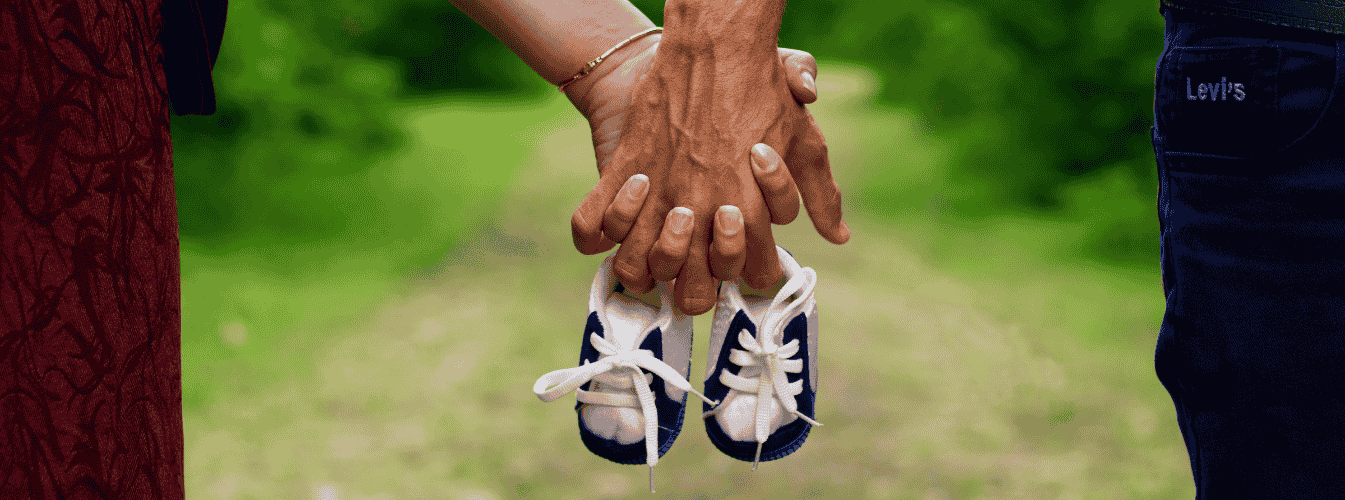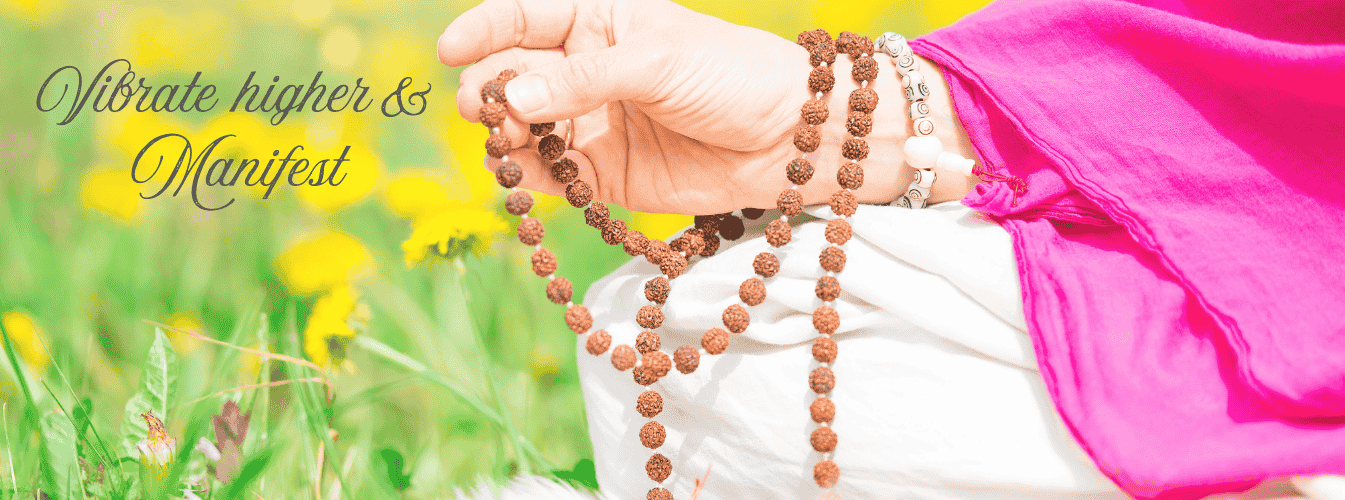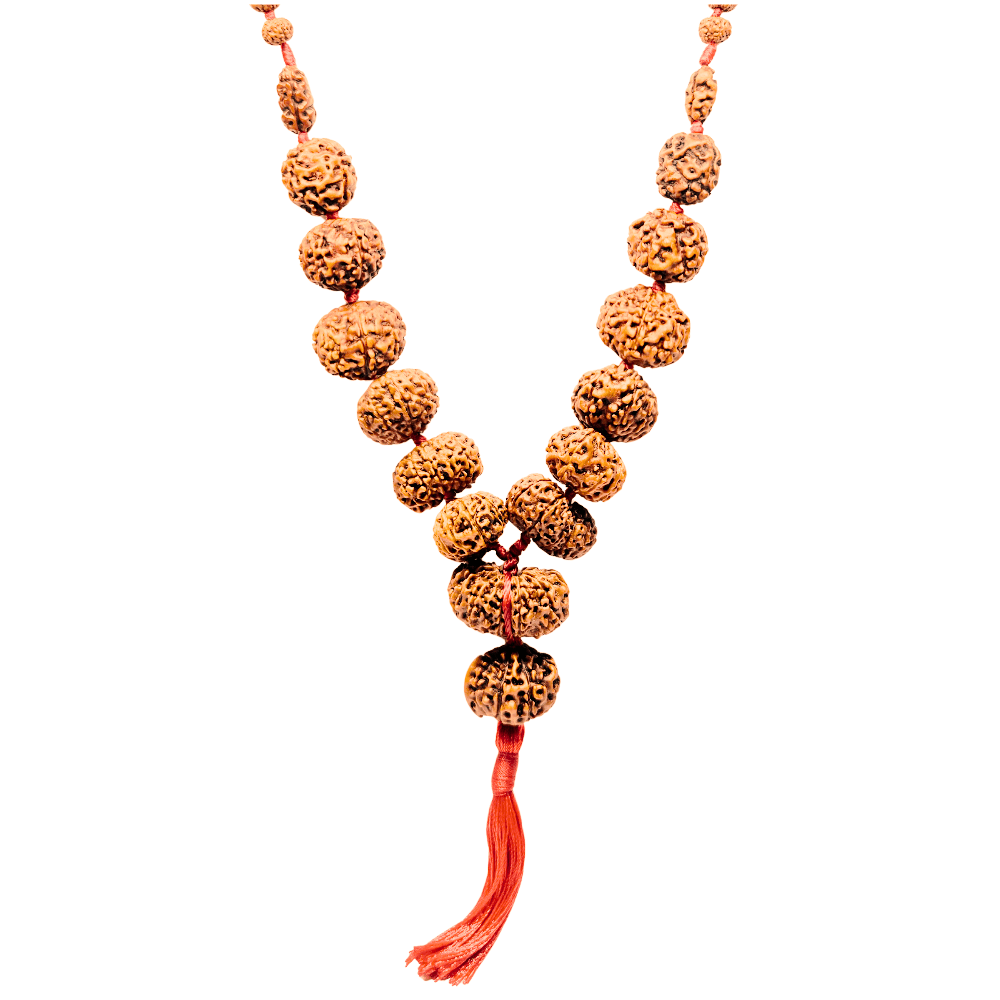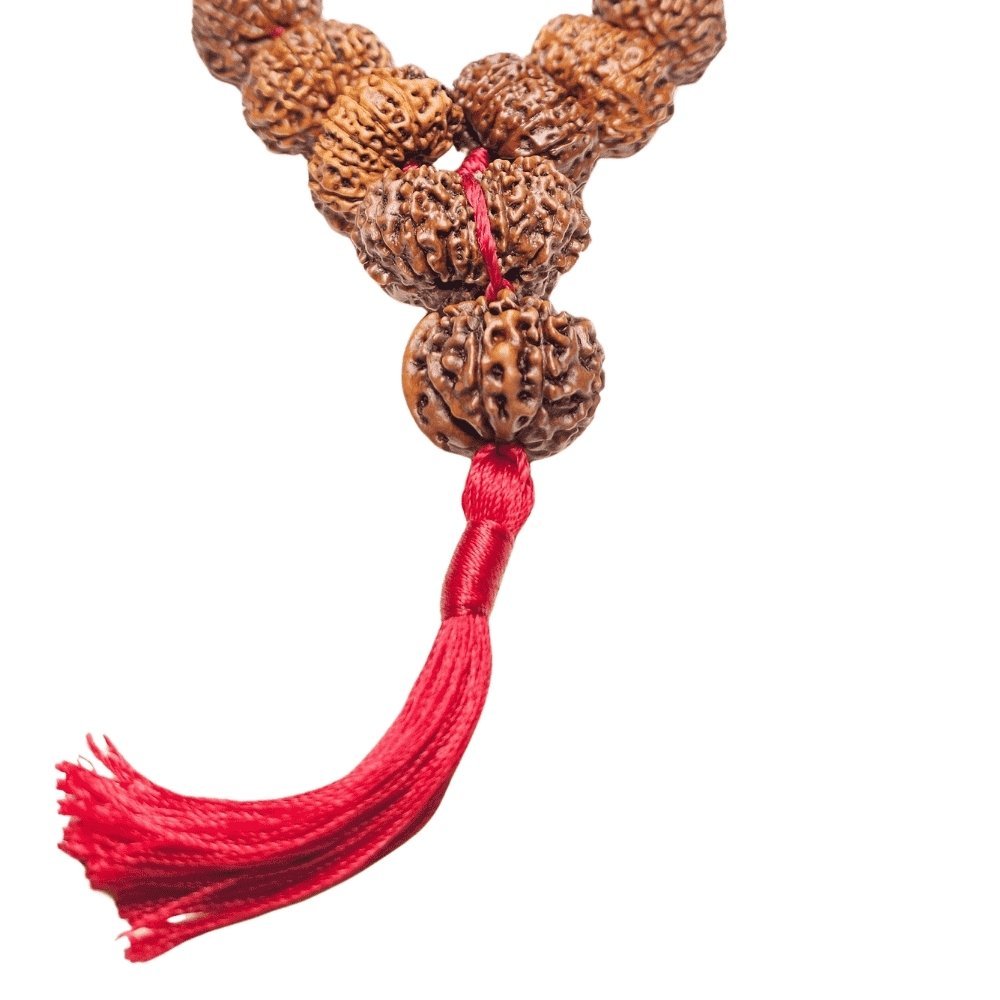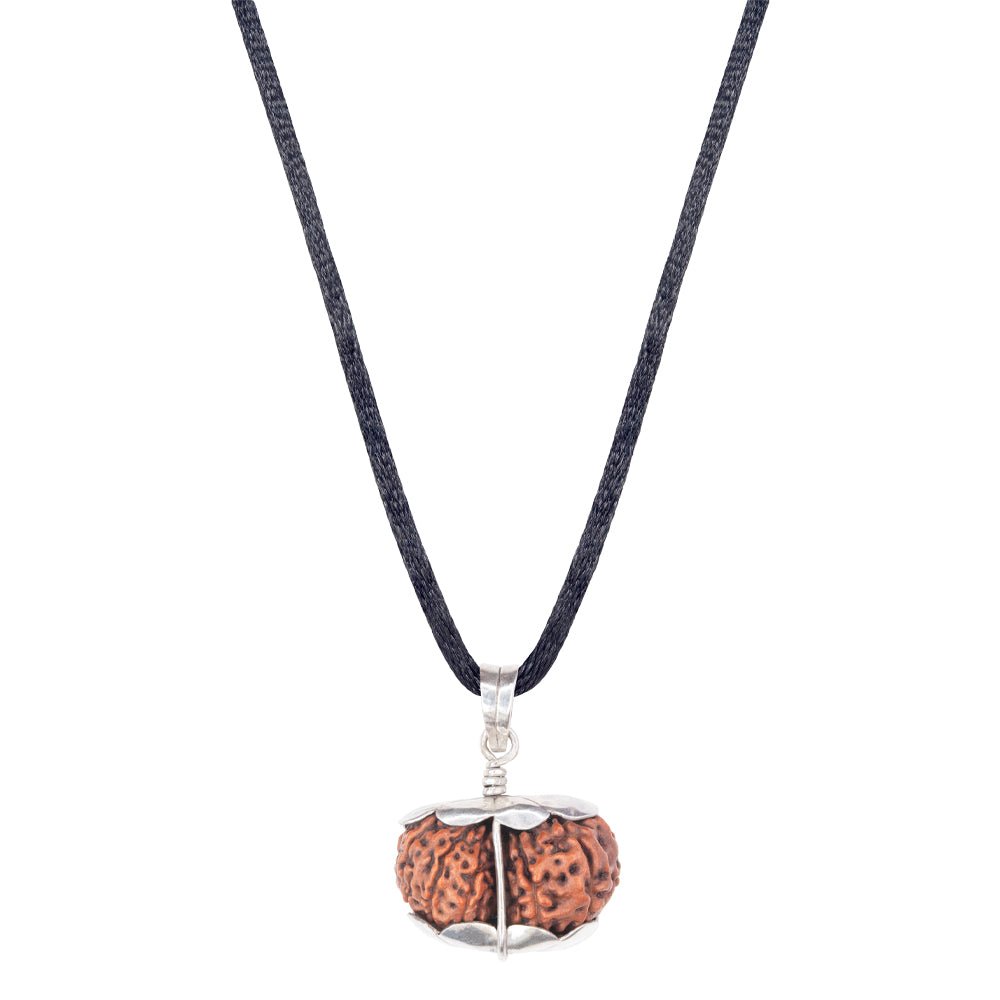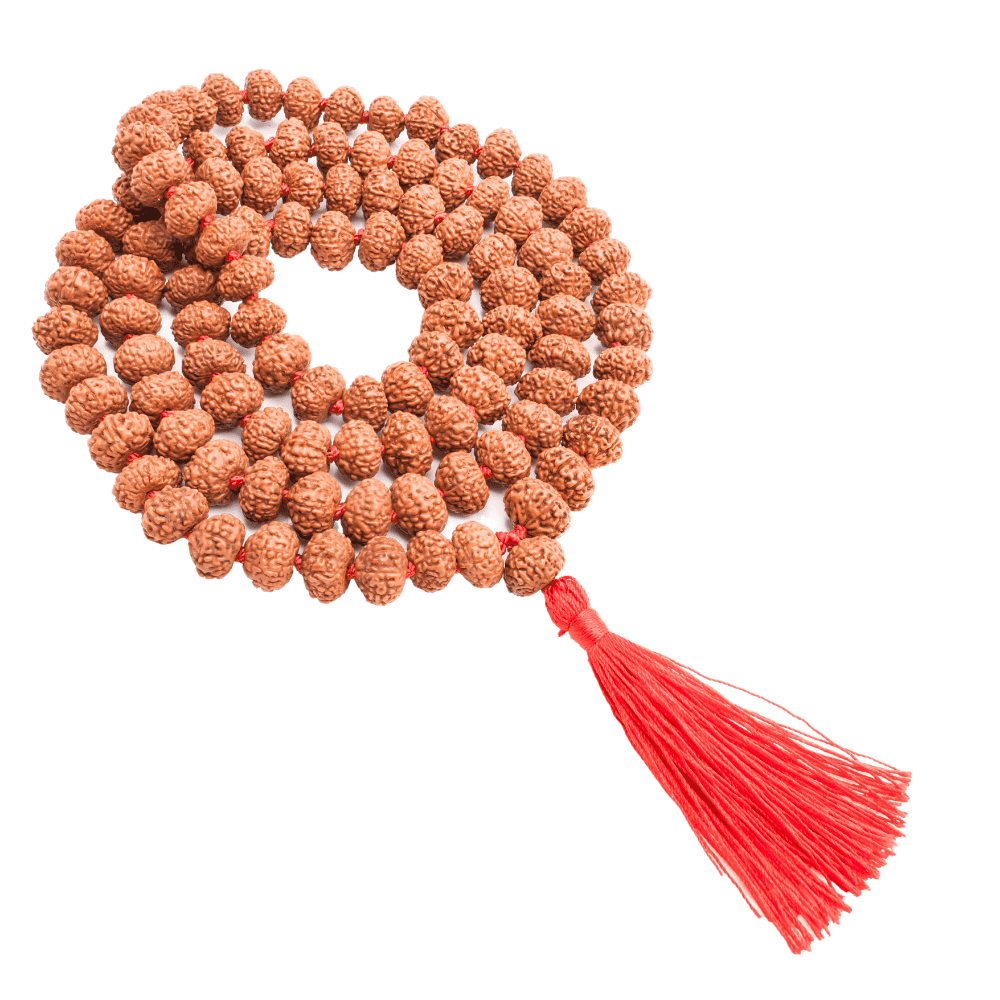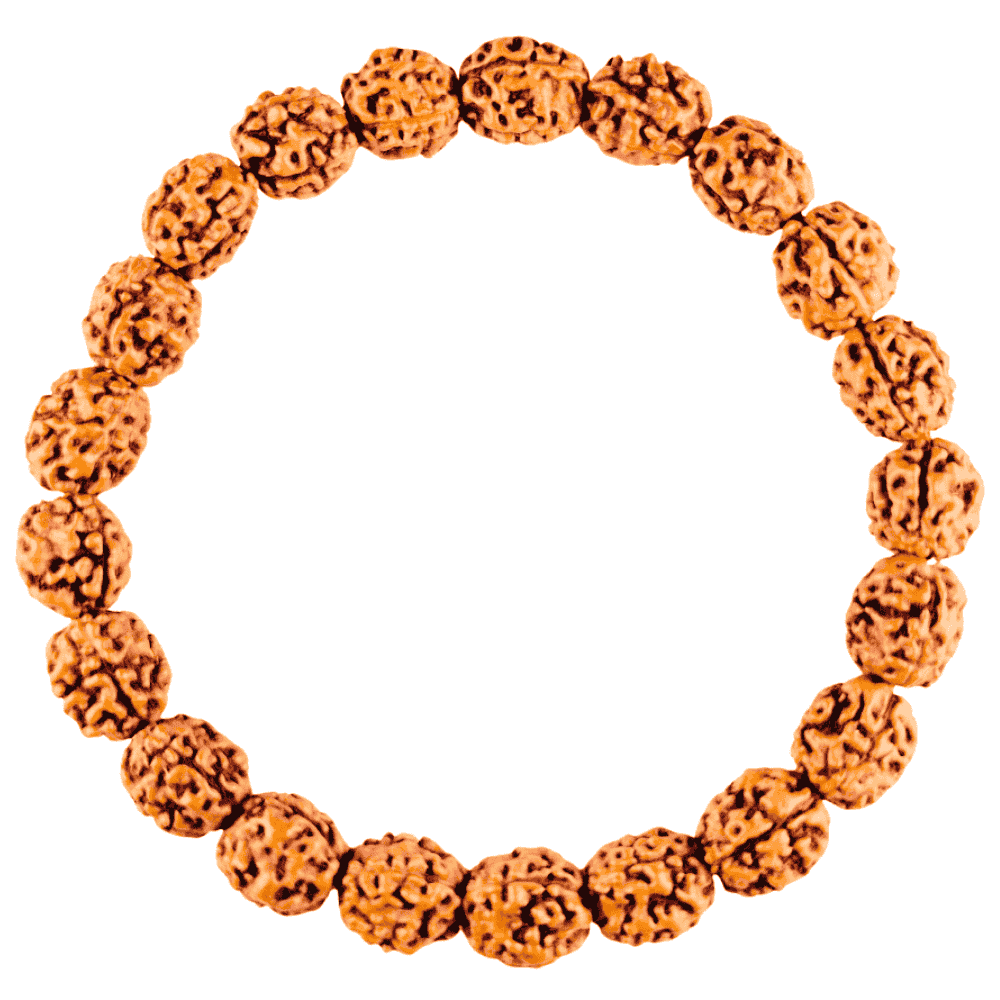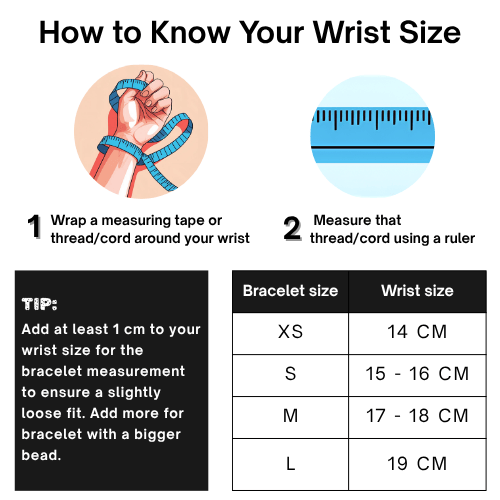Rudraksha Mala Benefits, How to Use & Choose the Right One
🌿 What Is Rudraksha?
Rudraksha is a sacred seed derived from the Elaeocarpus ganitrus tree, mostly found in Indonesia, India, and Nepal. It is believed to be the tear of Lord Shiva and is revered in Hinduism and other spiritual traditions.
These beads carry powerful vibrational energy that supports:
-
Meditation 🧘
-
Emotional healing 💫
-
Mental clarity 🧠
-
Protection from negativity 🛡️
📿 What Is a Mala?
A mala is a string of prayer beads used for japa (repetition of mantra), meditation, or simply as a spiritual tool. Traditionally, a mala consists of:
-
108 beads (the sacred number in spirituality)
-
1 guru bead (to signify the end/start of the cycle)
-
Often knotted or capped for durability
The Skanda Purana, one of the major Puranas, has a dedicated section on the sacredness of Rudraksha beads, including their use in malas:
“Japa mālāṁ tu rudrākṣaiḥ śata-aṣṭaka-samanvitām।
Pūjā-kāle dharec caiva śuddha-bhāvena bhaktitaḥ॥”
(A japa mala made of Rudraksha with 108 beads should be used during worship with devotion and purity.)
— Skanda Purana, Rudraksha Mahatmya, Chapter 3
✅ This affirms the 108 bead count used for japa.
While not naming “mala” specifically, the Brahmanda Purana affirms the use of bead counting during japa:
“Japo jñeyaḥ sa saṅkhyāto mālā-yuktaḥ śubhaḥ smṛtaḥ।”
(Japa that is counted using a mala is considered especially auspicious.)
— Brahmanda Purana
✅ Implies the sanctity of mala-based japa over random or uncounted repetitions.
Japa Yoga by Swami Sivananda also explains the purpose of the Guru Bead as a marker of transition in the japa cycle. “The rosary or mala used for japa should contain 108 beads, and one extra bead called the Guru bead. This bead is not crossed during the counting but used to reverse the direction.”
🧘 Why Wear Rudraksha in a Mala Form?
According to ancient texts like the Shiva Purana and Skanda Purana, wearing Rudraksha beads—especially as a mala close to the skin or heart—amplifies their spiritual power. Not only does this allow for direct energy transmission, but it also supports daily mantra practice and serves as a protective spiritual shield.
📖 Shiva Purana – Rudraksha Mahatmya
"Darśanāt sparśanāt dhāranāt pāpa nāśanam"
(Just by seeing, touching, or wearing Rudraksha, one’s sins are destroyed.)
— Shiva Purana, Vidyeshvara Samhita, Chapter 25
🟢 This verse highlights direct contact with the body (sparśa and dhāraṇa) as powerful for spiritual purification. This implies Rudraksha must touch the skin for full energetic effect—supporting the idea of wearing it as a mala.
📖 Shiva Purana – Rudraksha Mahatmya
“Hridaye rudrākṣa-dhāraṇaṁ sarva-rakṣākaraṁ bhavet”
(Wearing Rudraksha on the chest provides complete protection.)
🟢 This aligns beautifully with the modern interpretation that Rudraksha worn on the heart area becomes a spiritual shield or energetic armor.
Wearing Rudraksha beads as a mala amplifies their benefits by allowing:
-
Constant energy flow through skin contact
-
Easier mantra chanting and counting
-
Strengthened spiritual discipline
📌 Types of Rudraksha Malas
There are various types of malas, each serving a specific purpose:
1. Based on Mukhi (Facets)
-
12 Mukhi – Balances emotions and relationships
-
5 Mukhi – Most common, promotes peace and focus
-
7 Mukhi – Wealth and prosperity
-
9 Mukhi – Courage, protection
For complete explanation on all the benefits & meanings of each Rudraksha mukhi, please refer here.
2. Based on Bead Size & Origin
-
Small (Java origin) – Subtle energy, good for daily wear
-
Large (Nepal origin) – Stronger vibration, often used for deeper meditation
3. Based on Purpose
-
Siddha Mala – Combination of multiple Mukhi beads
-
Japa Mala – For mantra repetition
-
Healing Mala – For physical or emotional support
🌍 Nepal Rudraksha vs Indonesian Rudraksha: What’s the Difference?
When choosing a Rudraksha mala, one of the most common questions is: “Should I buy Nepal or Indonesian Rudraksha?” Both are authentic and powerful, but they differ in physical characteristics and energetic expression.
🏔️ Nepal Rudraksha:
-
📏 Larger in size (typically 20–30mm per bead)
-
⚡ Stronger energy vibration – ideal for intense spiritual practices
-
🌰 Thicker and more defined Mukhi lines
-
🧘 Preferred for deep meditation, siddha malas, and advanced sadhaks
-
🪙 Rarer and more expensive due to limited harvest and demand
Best for: Serious spiritual practitioners, those seeking faster results, or working with specific high-mukhi combinations.
🌿 Indonesian (Java) Rudraksha
-
📏 Smaller size (5–10mm per bead), lightweight and compact
-
🌱 Subtle, gentle energy – good for daily wear and beginners
-
🌰 Smooth surface with finer Mukhi lines
-
👕 Ideal for malas worn under clothing or for aesthetic purposes
-
💸 More affordable, widely available, and easier to string
Best for: Daily wear, students, working professionals, and anyone looking for balance and peace in daily life.
✅ Which Rudraksha Is Better?
There is no “better” Rudraksha — it depends on your intention and comfort.
🧘♂️ How to Use Rudraksha Mala
You can use Rudraksha malas in two ways:
1. For Meditation or Chanting (Japa)
-
Hold the mala with your right hand
-
Use your thumb to rotate each bead
-
Chant your chosen mantra 108 times
The Padma Purana mentions the use of Rudraksha and the importance of chanting with a proper count:
“Rudrākṣāṇāṁ śatāni aṣṭau japamālāṁ prakīrtitām।”
(A garland of 108 Rudraksha beads is recommended for chanting purposes.)
— Padma Purana, Patala Khanda
✅ It supports the sacred number 108 as the traditional japa count.
2. For Daily Wear
-
Wear around the neck or wrist
-
Set a spiritual intention or affirmation
-
Let the energy work passively throughout the day
🧘♀️ What Is Japa?
Japa (also spelled Japaa) is a spiritual practice of repeating a mantra or divine name—either silently in the mind, whispered, or spoken aloud. It is a key part of many yogic, Hindu, Buddhist, and other spiritual traditions.
🔁 Meaning of the Word "Japa"
The word Japa comes from the Sanskrit root “jap”, which means:
-
To repeat
-
To utter softly
-
To meditate upon
So, Japa is the repetition of sacred sound to focus the mind, awaken spiritual awareness, and connect with higher consciousness.
📿 How Japa Is Done
Japa is typically performed using a mala (prayer bead string), most commonly:
-
108 beads (traditional full mala)
-
27 or 54 beads (shorter wrist malas)
Each repetition of the mantra is counted on a bead as the fingers rotate through the mala.
🌟 Common Mantras Used in Japa
-
“Om Namah Shivaya” – for Lord Shiva
-
“Om Mani Padme Hum” – in Tibetan Buddhism
-
“Ram Ram”, “Hare Krishna”, or “Gayatri Mantra” – in Hindu paths
-
It can be any mantra, any affirmation or any name of God/higher power, as per your belief system or Guru’s guidance
🕊️ Japa Can Be:
-
Silent (Manasika Japa) – in the mind
-
Whispered (Upamsu Japa) – softly to yourself
-
Chanted (Vaikhari Japa) – aloud for energy and focus
Japa is not limited by religion. It is a universal practice for centering the mind, opening the heart, and experiencing inner stillness. Anyone can start, anywhere, anytime.
✨ Benefits of Doing Japa with Rudraksha Mala
Japa is not just a ritual – it's a transformational practice. Here's what it helps with:
-
🧠 Mental Clarity – Reduces overthinking, sharpens focus
-
😌 Stress Relief – Calms the nervous system and anxiety
-
🙏 Spiritual Awakening – Raises vibration and opens higher awareness
-
💪 Emotional Healing – Dissolves fear, anger, and emotional blockages
-
🕊️ Inner Peace – Leads to deeper states of stillness and joy
-
⏳ Discipline & Patience – Builds consistency in spiritual growth
-
🔮 Energizes the Mala – Rudraksha beads become spiritually charged with your mantra
📿 Complete Guide to Japa Meditation with Rudraksha Mala
Mantra Japa (chanting) is a sacred spiritual practice that brings peace, clarity, and connection to higher consciousness. When done with a Rudraksha mala, its power is multiplied.
🧘♂️ How to Sit for Japa – Posture & Position
Your sitting posture during Japa affects your energy and concentration. Here's how to prepare:
✅ Ideal Sitting Positions:
-
Padmasana (Lotus pose) or Sukhasana (cross-legged) for stability.
-
Sit on a clean mat or woolen cloth – never directly on the floor to avoid energy loss.
-
Keep your spine erect, shoulders relaxed, and neck straight.
-
Eyes can be closed or softly gazing downward to avoid distraction.
🙌 Hand & Mala Position:
-
Hold the Rudraksha mala in your right hand.
-
Use thumb and middle finger to rotate the beads.
-
The mala should rest on the middle finger, not touch the index finger.
-
Keep the mala at chest level or slightly below; avoid lifting it above your head.
❌ Don’ts During Japa
-
❌ Avoid distractions – Don’t talk, eat, or use a phone during chanting.
-
❌ Avoid using the mala:
-
when visiting restrooms
-
while drinking alcohol
-
during physical intimacy
-
when going for funerals
-
during hot/warm water showers which use chemical soaps
-
while sleeping
-
❌ Don’t let others use your Japa mala – It carries your energy and should remain personal.
🔄 How Many Times Should You Chant?
-
108 times is the traditional count using a full mala.
-
Beginners may start with 27 or 54 repetitions and gradually build consistency.
⏰ When to Do Japa – Best Timing
The most spiritually powerful times to do Japa are:
-
🌄 Brahma Muhurta or the ambrosial hour (4–6 AM) – The mind is quiet and the environment is pure, is believed to be the best time for mindfulness practices.
-
🌇 Sandhya kaal or sunset hours (6–7 PM) – Helps unwind and center yourself.
-
📿 Anytime during the day when your mind is calm and alert can still be effective.
Consistency is more important than time – try to chant at the same time daily.
✅ Step-by-Step Japa Practice
Here’s a simple, guided routine for beginners or experienced practitioners:
-
🧼 Cleanse yourself (optional bath or wash hands/feet).
-
🕯️ Light a diya or incense in your meditation space.
-
🧘♀️ Sit in a steady, comfortable posture, with spine straight on a mat.
-
🙏 Chant a short prayer or offer gratitude to your guru or deity or higher power, as per your belief system.
-
📿 Hold the mala in your right hand.
-
🕉️ Begin chanting your mantra (e.g., Om Namah Shivaya, Om Hreem Namah).
-
👉 Rotate one bead per repetition, don’t skip or cross the guru bead.
-
🔁 After 108 repetitions, pause, sit quietly for 1–2 minutes, and end with gratitude.
🪷 Bonus Tip: Set a clear intention before starting. Even 5 minutes of focused Japa is more powerful than 30 minutes of distracted chanting.
🌱 Where to Begin Japa with Rudraksha Mala If You’re New
If you're new to Japa, here’s how to start:
✨ Start Simple
-
Choose a short, meaningful mantra (e.g., Om Namah Shivaya).
-
Begin with 11, 27, or 54 beads, and slowly build up to 108 daily.
🔁 Be Consistent
-
Practice daily, even if just for 5–10 minutes.
-
Choose the same time and place to form a habit.
🕉️ Let Go of Expectations
-
You may not feel results immediately — that’s okay.
-
Stay patient and allow the mantra to work through you over time.
🙋♀️ Recommended Malas to Begin Your Japa Journey:
-
🧘♂️ 5 Mukhi Rudraksha Mala – Ideal for beginners and daily practice
-
🌟 Siddha Mala – For advanced seekers seeking holistic spiritual elevation
-
Alternatively you can select a specific Mukhi Rudraksha or a combination Mukhi Rudraksha, as per your goal or needs or guidance that you get from your guru. For complete explanation of different Mukhi Rudraksha, please refer here.
🧼 How to Take Care of Your Rudraksha Mala
According to traditional texts like the Shiva Purana, Rudraksha beads are sacred and must be handled with respect. To maintain their energetic potency and physical integrity, oiling with natural sattvic oils (like ghee or sandalwood), keeping away from harsh chemicals, avoiding heat, and re-energizing near a Shiva Lingam or through mantra chanting are highly recommended.
To maintain the energy and longevity of your mala:
-
🧴 Oil it monthly with natural oils (e.g. ghee/mustard seed/sandalwood/olive oil)
-
🌞 Keep away from strong chemicals like perfumes or soaps
-
💧 Avoid hot/warm water
-
🛐 Energize regularly by placing it near a Shiva Lingam or chanting mantras
📖 Shiva Purana – Rudraksha Mahatmya
“Japo japena saṁsiddho dhāraṇena mahāphalaha। Rudrākṣaṁ śaṅkara-sthāne sthāpyaṁ śuddhena cetasā॥”
(Rudraksha beads give great results when energized by japa and kept near a Shiva Lingam.)
— Shiva Purana, Vidyeshvara Samhita
🟢 Clear scriptural instruction: Place Rudraksha near a Shiva Lingam and chant mantras to recharge its energy.
👥 Who Wears Rudraksha Mala?
Rudraksha malas are worn by:
-
Spiritual seekers 🧘
-
Yoga practitioners 🧎♀️
-
Business professionals seeking mental clarity 💼
-
Healers and energy workers 🌟
-
Anyone on a journey of self-discovery 🔍
From monks to entrepreneurs, wearing Rudraksha is no longer limited to religious traditions.
🌐 Mala in Different Cultures
While Rudraksha malas are rooted in Hindu tradition, the use of prayer beads spans across many cultures and religions:
Hinduism
-
Rudraksha mala is used to chant mantras like “Om Namah Shivaya.”
-
Usually made of 108 beads plus 1 guru bead.
-
Worn for protection, meditation, and spiritual discipline.
Buddhism
-
Known as “Buddhist mala” or “Japa mala.”
-
Typically made from sandalwood, bodhi seeds, or gemstones.
-
Used for counting mantras like “Om Mani Padme Hum.”
Christianity
-
The Rosary in Catholicism functions similarly.
-
Used for prayers like Hail Mary and the Lord’s Prayer.
-
Usually consists of 59 beads.
Islam
-
Tasbih or Misbaha, often made of 99 or 33 beads.
-
Used to recite the 99 names of Allah or phrases like “Subhanallah.”
Sikhism
-
Mala (called Simran mala) is used in Naam Simran (remembrance of God).
-
Focuses on internalizing divine presence through repetition.
Across all these traditions, the core purpose remains the same:
🧘 Connecting with the divine, calming the mind, and deepening spiritual awareness.
✨ How to Choose the Best Rudraksha Mala for Yourself
Choose based on your intention, energy, and comfort:
🔹 For peace & mental clarity – 5 Mukhi mala
🔹 For wealth & abundance – 7 or 13 Mukhi mala
🔹 For health & immunity – Gauri Shankar or 6 Mukhi mala
🔹 For meditation – Japa mala with 108 beads
🔹 For all-round spiritual growth – Siddha Mala
For complete explanation on Rudraksha please refer here, and to help you choose which Rudraksha is best for you, please refer here.
✅ Pro Tip: Trust your intuition – often the mala you’re drawn to is the one you need.
✨ Personal Experience: How a Rudraksha Mala Helped My Wife Overcome Flight Anxiety
When I first met my wife, one of her biggest challenges was flying. She had a deep fear of air travel — she’d anxiously research airline safety records, aircraft types, and ideal flying times before every trip. Once onboard, she would remain tense for the entire flight — hands tightly clasped, eyes closed, silently reciting prayers with a small pocket-sized Bhagavad Gita near her. She wouldn’t eat, drink, or even leave her seat until the plane landed.
One day, I gently suggested she start using a Rudraksha mala — not just to wear, but as a daily spiritual companion. She began placing her mala on our home altar and used it for daily Japa (mantra chanting). Slowly, that small ritual brought her inner structure and grounding. It wasn’t just a bead string anymore — it became a symbol of discipline, calm, and inner connection.
Over time, she started wearing her mala during moments of anxiety — like when she was alone at night, or facing stressful situations. Eventually, she chose to wear it on a flight.
That first flight with her Rudraksha mala felt different. She told me she could actually feel a calm wave settling over her. Instead of panic, she experienced steadier thoughts and a sense of subtle protection. Her faith felt closer. Even now, she still checks all the flight details — but the nervous tension is gone. Her mala and Rudraksha bracelet have become her quiet companions in the sky.
Today, whenever she boards a flight, she carries more than luggage — she carries trust, built bead by bead.

🌍 Why Choose Rudraksha Indonesia?
At Rudraksha Indonesia, we provide:
-
🌱 Authentic Rudraksha beads sourced from our plantation in Indonesia
-
🧪 Hand-inspected malas
-
📦 Worldwide shipping to USA, India, Australia, Singapore & beyond
-
💬 Expert guidance to help you choose the right mala
🙋♀️ Frequently Asked Questions (FAQ)
Q: Can anyone wear a Rudraksha mala?
-
Yes, anyone from any background or religion can wear a Rudraksha mala. It’s a universal spiritual tool.
Q: Do I need to chant mantras when wearing a mala?
-
It’s not mandatory. However, chanting enhances the spiritual power of the mala.
Q: How often should I clean or energize my mala?
-
Once a month is ideal. You can do this by oiling it and chanting near a sacred space.
Q: Can I wear Rudraksha while sleeping or showering?
-
It’s best to remove it during showers or sleep to maintain its physical condition.
Q: What is Japa meditation?
-
Japa is the practice of repeating a sacred mantra (e.g. Om Namah Shivaya) either silently or aloud using a mala. It calms the mind, sharpens focus, and connects you with divine energy.
Q: How many times should I chant a mantra in Japa?
-
Traditionally, 108 times using a full mala. Beginners can start with 11, 27, or 54 repetitions and gradually build up to 108.
Q: What are the main rules for doing Japa?
-
Sit upright with a straight spine in a clean, quiet space, ideally during Brahma Muhurta (4–6 AM).
-
Hold the mala in your right hand using your thumb and middle finger only.
-
Do not cross the guru bead (Meru)—reverse direction at the end of the mala.
-
Stay focused, avoid talking, and do not let others touch your mala.
Q: What’s the difference between Nepal and Indonesian Rudraksha mala?
-
Nepal Rudraksha: Larger, more powerful, ideal for intense spiritual work.
-
Indonesian Rudraksha: Smaller, subtler energy, great for daily wear and beginners.
-
Both are good and the choice depends on your needs, intention and comfort.
Q: How many beads should a mala have?
-
Most malas have 108 beads plus 1 guru bead. Other common configurations include 27 or 54 beads for shorter chanting rounds or wrist malas.
Q: Can I use the same Rudraksha mala for Japa and wearing?
-
Yes, you can. However, if the mala is being used intensively for Japa, it’s recommended to dedicate it solely for spiritual practice to preserve its energy.
Q: Can women do Japa using Rudraksha mala?
-
Yes. Anyone, regardless of gender, religion, or background, can practice Japa and benefit from Rudraksha mala.
Q8: Which mala is best for beginners?
-
A 5 Mukhi Indonesian Rudraksha mala is ideal for beginners. It’s gentle, affordable, and suitable for daily meditation and wearing.
Explore authentic hand-crafted malas at 👉 Rudraksha Indonesia
✅ Rudraksha Indonesia
-
✔️ Authentic Rudraksha from Java Plantation
-
🛡️ Hand-selected
-
📜 100% Original or Money-Back Guarantee
-
🌕 Trusted by over 5,000 customers worldwide for over a decade
Let the Rudraksha mala ground your spirit and open your path to divine energy.
⚠️ Disclaimer
This blog is intended for spiritual and educational purposes only. The effects of Rudraksha are based on ancient Vedic texts and traditional usage. It is not a substitute for medical or psychological advice. For any health concerns, please consult a licensed professional.
✍️ About the Author
Giraj Mukhi is the founder of Rudraksha Indonesia, with over 12 years of experience in the spiritual wellness field. He is deeply rooted in Sanatana Dharma and has studied the use of Rudraksha. His knowledge comes from texts such as the Shiv Puran, from real-life experience of clients, and he also relies on his personal research & experimentation of Rudraksha. He is passionate & a big believer in a scientific approach in terms of testing the beads and recording its impact. Giraj regularly advises clients on Rudraksha selection, and is passionate about preserving authentic practices.
📅 Last reviewed: July 26, 2025

